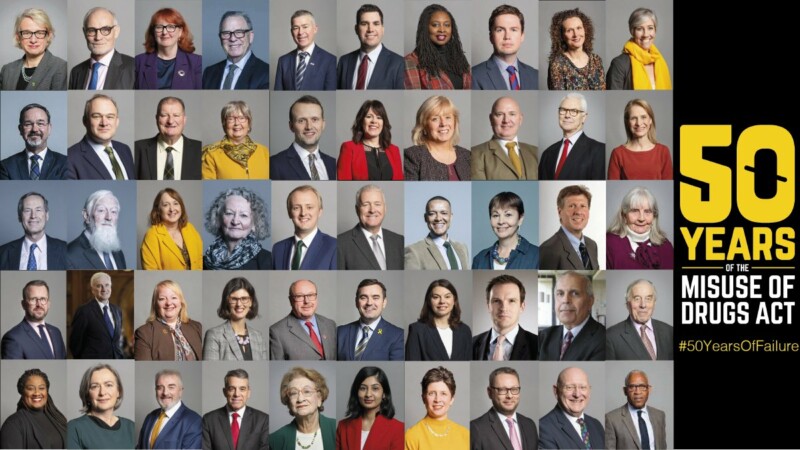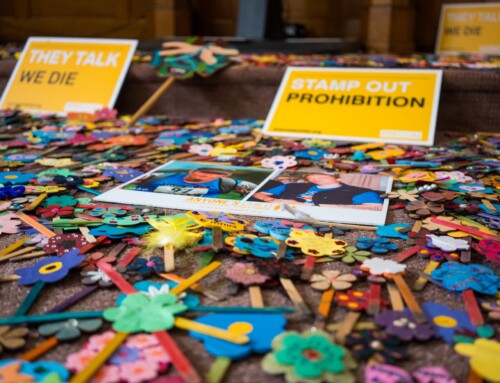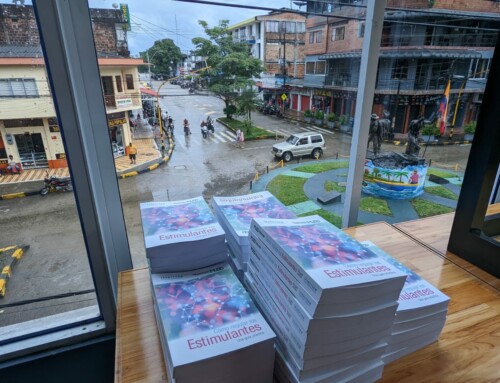This blog was written by Ben Twomey, Head of Policy for the National Youth Advocacy Service and former drugs policy lead for three Police and Crime Commissioners, in West Midlands, Warwickshire and County Durham. He has also led on related issues including stop and search, organised crime, youth engagement and homelessness.
Article originally published in Policing Insight on Thursday 27th May 2021.
On its 50th Anniversary, is it time to review the Misuse of Drugs Act 1971?

This year the Misuse of Drugs Act is fifty years old, as is the system of blanket drug prohibition it created. When the Act was passed in 1971, both police and policing looked very different. There were 67 different forces in England, Scotland and Wales. Sir John Waldron – born in 1909 and raised by Victorians – was Met Commissioner. Male and female police officers had separate rank structures, and forces still segregated female officers from the men, often in separate buildings. It was only that year the first ever Asian “WPC”, Karpal Kaur Sandhu was appointed.
It wasn’t just the police that were very different half a century ago. As now, drugs were on the front pages of newspapers, with a focus on (then ‘hippy’) counterculture and rock stars, driving demands that ‘something must be done’. But overall drug use was low, and most types of drug were not widely available outside big cities. There was little drug-related violence, or street dealing, and the small scale of the market meant organised crime was not benefitting significantly.
While the challenges the Act was created to address existed, they were small compared to today, or in fact, compared to many other issues facing communities.
When in England, the Misuse of Drugs Act 1971 continues to be used every four minutes in the enforcement of drug offences, it is high time for a sensible discussion about whether the MDA has come close to achieving its goals of significantly reducing drug availability, use, and accompanying crime. After five decades, has the law eliminated the ‘drug problem’? Every police officer knows the answer to that from personal experience. But perhaps some statistics can illustrate the full scale of failure.
These are not outcomes senior Ministers mention when celebrating major police drug operations.
A 2019 review for the Home Office put the cost of Class A drug-related crime alone to the criminal justice system at £4bn a year. What has this criminal justice spending – tens of billions of pounds over 50 years – achieved then?
In 1971, fewer than 10,000 people used heroin. Today over 250,000 do – a 2400% rise. Cannabis use has risen by over 400%, to 2.5 million users. The kinds of drugs being used have also proliferated. In 1971, cocaine use was virtually unknown outside elite circles; now just under a million people use it every year, half a million use ecstasy and over 150,000 use other new psychoactive substances.
One in three drug deaths in Europe happen in the UK, and Scotland’s death rates are 13 times the EU average.
Tragically, in England and Wales alone, drug related deaths have risen almost 30 fold – from under 100 to 2883, with Scotland in an even worse situation. One in three drug deaths in Europe happen in the UK, and Scotland’s death rates are 13 times the EU average. Half of people who inject drugs test positive for hepatitis C. Glasgow has an HIV epidemic among this group.
In terms of policing activities aimed at deterring use and reducing availability, what has happened? Firstly, seizures. Cocaine seizures increased from 6kg a year in 1971, to 4,000kg in 2018-9, more than a 600-fold increase. That sounds impressive, but in reality just demonstrates the huge increase in the scale of the market, which has grown at a similar rate. Research for Tony Blair’s Strategy Unit in 2003 concluded drug seizures had never topped 20% of what is coming in, and are usually a small fraction of that. For example, it was estimated that under 1% of the heroin used in Scotland was seized during one study period. That’s less than supermarkets lose in food wastage. Yet seizure rates of 60-80% are needed to have a serious enough impact on OCG profits to make the trade unviable. As Dame Carol Black noted in her review for the Home Office, an established cocaine smuggler can afford to lose several shipments and still make an (un)healthy profit if just one gets through. After 50 years of the MDA, the UK has the highest rate of cocaine use in Europe, with widespread availability, and purity that has increased to near record levels.
If seizures haven’t worked, what about arrests? Since 1971, approaching 3 million criminal records for drug offences have been issued, and many more for offences committed to pay for drugs. Tens, or even hundreds, of thousands have been imprisoned. With no measurable impact on rising availability or use, or the ever expanding illegal trade supplying it. Drugs can be easily ordered with a Snapchat or text message for door to door delivery, or on the streets of almost every town and city. There is no evidence to suggest that the decision to arrest or prosecute changes rates of drug use – in other words, enforcement as a deterrent is a myth. The Home Office’s own findings concluded in 2014 that: “Looking across different countries, there is no apparent correlation between the ‘toughness’ of a country’s approach and the prevalence of adult drug use”.
In 1971 very few children were involved in the drug trade. Read our Young People briefing and our Trafficking and Exploitation briefing.
Worse still, not only are more young people taking drugs, but many more are being pulled into their supply. In 1971 very few children were involved in the drug trade. Now, the Children’s Commissioner estimates 2,000 are involved in county lines in London alone, with 50,000 children involved in gangs, including many organised crime groups involved with drug supply. A recent Home Office review also confirmed that major police operations to disrupt drug supply are associated with spikes in homicide rates.
These are not outcomes senior Ministers mention when celebrating major police drug operations.
This financial year’s Government funding settlement for the whole policing system is £15.8 billion. Yet according to the Home Office, the social and economic costs of Class A drugs alone have now ballooned to over £19 billion a year.
Is there any relevant measure by which the Misuse of Drugs Act could be judged anything but a failure? It has not made people safer, reduced harm or use, and is squandering resources on ineffective, or even counterproductive measures. The drug problem is many times worse than it was in 1971, and no one with any credibility believes that the MDA can deliver the ‘Drug Free Society’ Theresa May was still setting as a goal when Home Secretary.
It is however, not all doom and gloom. There are more effective approaches to drugs operating around the world. Even within UK policing I have been fortunate to work with innovative officers and PCCs on new approaches, operating within the MDA, that while not a miracle cure, do help reduce some harms.
Police drug offence diversion schemes. Although first appearing in County Durham (where I had the privilege of working for the late Ron Hogg), Avon & Somerset, and Thames Valley, are now attracting interest across the country. Many forces have already followed suit including West Mids, Kent, multiple forces in Wales, and recently pilots by the Met among others. Keeping people suffering from drug dependence out of prison, and away from life-scarring criminal records, does not mean they are free to harm others. In County Durham, we focused on the right support instead of the wrong conviction. For those engaged with the Durham ‘Checkpoint’, Thames Valley and Avon and Somerset diversion schemes, both reoffending rates and the seriousness of offences committed fell. As Avon & Somerset Police noted in their evaluation: “The Universal Harm Score for this cohort has seen a step-change reduction”. What these show is that criminalisation is not the best option available to the police for possession and minor cultivation or supply offences.
Heroin Assisted Treatment. One of the drug policy recommendations made by West Mids PCC David Jamieson when I led on his efforts to tackle addiction, was to explore prescribing medical-grade heroin in clinics to people for whom other treatments haven’t worked. We visited Switzerland to see one in operation, and meet local police captains who strongly support them. They told us these clinics reduce deaths – no one overdoses because the heroin being used is regulated; people no longer commit acquisitive crimes to buy heroin, and OCGs had lost some of their best customers. And because patients weren’t selling heroin themselves to pay for their own use, the number of suppliers had fallen too. Glasgow and Middlesbrough now have them, but the National Police Chiefs’ Council Drugs Lead DCC Jason Harwin backs rolling them out, funded by an increase in the share of POCA money retained by police – another of the recommendations we developed when I worked for the West Mids PCC.
Naloxone. Naloxone is a medication used to block or reverse the effects of opioids, particularly in cases of overdose. It can work within two minutes and lasts for around 30 minutes to one hour, offering a critical window for medical assistance to arrive. I am proud to have written the policy for the UK’s first ever pilot of police officers carrying naloxone. Since my brilliant colleagues introduced and expanded the West Midlands Police pilot, officers are now also using naloxone to save lives in Cambridgeshire, North Wales and Scotland. This week Police Scotland revealed their naloxone pilot has saved 12 lives in its first 12 weeks. Beyond the obvious benefits to the police priority of preserving life, people’s engagement with drug treatment services can increase where there is naloxone provision, which in turn reduces drug-related crime.
Drug Safety Checking. People die because their drugs are unregulated, so they cannot know how strong they are, or if they are contaminated. One way round this is drug safety checking, where people handover a sample of their drugs to be analysed. Before they get the results, a drug worker talks to them about the risks involved, and how to reduce them – starting by saying the safest option is not to take drugs at all. Some people dispose of their drugs, others take smaller quantities, and other precautions, if they do. The Home Office licensed a pilot service, but most of the work to date has been done at festivals by the Loop charity, and the Welsh Government funded WEDINOS programme. In the West Midlands we brought the Loop to MADE Festival for the region’s first ever safety checking service in 2018, where super-potent ecstasy was discovered and our rapid drug alert to festival-goers may have saved lives.
However, the reality is that while these approaches point to what could be done with a health rather than criminal justice centred approach to drugs, they also underline the limits of what can be done under the Misuse of Drugs Act. Here are a few examples of what is happening beyond our shores that the MDA prevents us even considering here:
- Scientists argue the MDA is preventing them from properly exploring the medical uses of many drugs, and despite some changes in the law, means that few doctors are prescribing cannabis even where appropriate, leading to many thousands self-medicating with illegal cannabis of unknown potency or purity. How many police signed up to arrest sick people?
- The Government and PHE have acknowledged the global evidence base that Overdose Prevention Centres (or Supervised Drug Consumption Rooms) help get people into treatment, reduce deaths, don’t increase use, and improve communities by reducing street injecting. But there is no legal framework to open them here… because of the MDA.
- Many more countries have decriminalised the possession of some or all drugs for personal use. Most famously, Portugal 20 years ago. Decriminalising drugs, and focussing on health approaches instead saw HIV infections and deaths fall from some of highest in Europe to some of the lowest, numbers of young lives blighted with a criminal record reduced, while use levels have stayed below EU averages – and are now particularly low among young people.
- Cannabis is now legally regulated in Canada, 15 US states, and Uruguay. Many others are about to do the same – including Mexico, Switzerland, Luxembourg and Israel. This regulation has been partly driven by criminal justice concerns: Canadian Justice Minister Jody Wilson-Raybould said her government’s goals for a regulated cannabis market were to keep profits out of the hands of organised crime, and cannabis out of the hands of kids.
The UK does not have to do any of these things, but given the manifest failure of our own laws, we should at least properly consider what has worked in other countries, and the barriers to achieving similar outcomes here. So, while Dame Carol Black laid out in detail the failures of the current approach in Phase I of her Government report, and the imminent Phase II will call for an overhaul of the treatment system, we urgently need a review of our drug laws too, and an honest political debate on alternatives.

To mark the 50th Anniversary of the MDA, a cross party group of over fifty MPs and Peers have signed a statement calling for such a review. We need politicians to feel confident they can publicly engage in this debate without being accused of going ‘soft on drugs’ by political opponents, or the media. That would be helped immeasurably by more PCCs and police speaking with clarity and honesty to the public about what is and is not achievable through enforcement efforts. And by backing, in private and in public, the calls for a review of our drug laws.
Just as UK police have changed dramatically since 1971, policing of drugs must too. Then we might finally begin getting to grips with a situation that has moved from a small number of people with drug problems, to one of the biggest issues facing society today. If we don’t, we will condemn ourselves to another half century of failure that harms the young, the vulnerable and every community the police are striving to protect.
Use our template letter to encourage your MP to support the call for a reform of the Misuse of Drugs Act. See which MP have already shown their support here.
Hear from 50 diverse voices on why they want to see an end to the Act here.





Leave A Comment